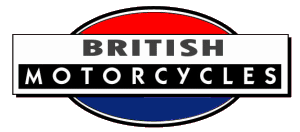Watney Motorcycles
Manufactured by Watts of Lydney Group of Althorpe House, High Street, Lydney.
Watney motorcycles were produced in 1922. They were
built using 296cc Villiers
two-stroke engines and 292cc JAP
and 348cc Blackburne four-stroke
engines. They had an Amac or B
and B carburettor, and two-speed Burman
gearboxes. For the four-strokes there was also the choice of three-speed,
and belt final-drive. The frame had straight tubes and Brampton
Biflex forks. The main brake operated on the rear wheel belt-rim.
-
1851 David Lazarus Watts opens a general store in Lydney. David Lazarus
Watts, a native of Devon, traveled to Lydney in 1850 at the age of 39.
Watts married local resident Elizabeth Stephens, and the couple opened
a general store together in 1851.
-
Watts died in 1862, and Elizabeth Watts took over management of the store,
aided by her five children. The family then opened a bakery, and later
added a supply store as well.
-
1880 Son Josiah Watts founds an ironmonger's shop in Lydney. One of the
Watt's sons, 14-year-old Josiah, left home to become an apprentice in an
ironmonger's shop in Bristol in 1870. After completing his apprenticeship,
Josiah Watts returned to Lydney to set up in business on his own. Borrowing
£300 from an uncle, Watts launched his own ironmonger's shop near
the Lydney port. Watts's business flourished, with orders coming not only
from the town's port operations, but also from the nearby railroad. The
company also began providing parts and equipment for the town's main industry,
a tin plate factory.
-
1905 The company becomes J. S. Watts and Sons as sons Arthur and
John Watts join. Josiah Watts's sons Arthur and John, born in 1887 and
1890 joined their father's business. Arthur Watts went on to become an
apprentice to a motor dealership in Bristol, before returning to Lydney
to add that business to the company
-
1910 The company opens a garage in Lydney.
-
1912 The company begins Ford motor car sales.
-
In 1920, Arthur Watts arranged to buy a fleet of more than 200 surplus
vehicles, including support workshops and spare parts, left behind by the
departing U.S. troops. The fleet provided the basis for John Watts's launch
of a bus service in 1921. That company initially served a route between
Ebbw Vale and Tredegar, but by 1922 had been expanded to include the Forest
of Dean area. The family's involvement in busing led it to spearhead the
merger of a number of area bus companies, creating the Red & White
Bus Company, in 1937.
-
1922 Watney were motorcycles produced by them in 1922. (See above)
-
1938, Watts formed a new business, which served as the basis of the later
Watts of Lydney group: a tire remolding and retreading business that became
known as the Watts Tyre and Rubber Co. The Watts family interest in tire
retreading led to the formation of Tyresoles in 1941.
-
1948 Continued expansion of its tires operation led to the opening of new
warehouses in Cardiff and Neath in 1948. By 1948, Watts Tyre & Rubber
Co. had opened a new, larger retreading facility in Lydney at the site
of the town's old tin plate factory. The business acquired a franchise
for the Vaculug retread process, introduced in England just one year earlier.
That method, pioneered in the United States, was initially developed to
retread agricultural tires. The process was later expanded for use with
other vehicles, particularly heavy construction and other industrial vehicles.
-
1951 The company receives a franchise for the Vaculug retreading process.
-
1953 The company begins manufacturing Duracraft industrial tires, forming
the new Tyre Division.
-
1966 Watts Industrial Tyres Ltd. is formed.
-
1974 The company diversifies with Watts Urethane Product Ltd.
-
1979 The business reorganizes under holding company Watts of Lydney Group.
-
1983 A new rubber compounding plant is opened.
Source: Graces Guide
If you have further information or a query related to this page, please contact us

